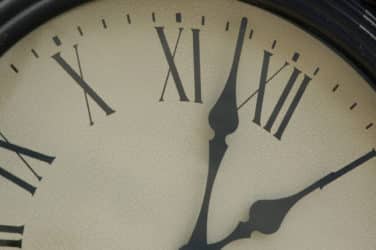Odd lots – not quite the Felix Unger and Oscar Madison of the trading world.
But they remain as popular as the mid-70s television show The Odd Couple
Odd lots, still defined as stock trades less than 100 shares in size, are still en vogue as high stock valuations have made it more expensive for retail, and in some cases even costly for smaller firms, to get exposure in the stocks they want.
[broadstreet zone=”53777″]
First, a little history in this day and age of the block trade. Prior to the rise of algorithmic trading, odd lots were generally understood to be representative of the interests of ‘uninformed’ retail traders and their order flow. But as markets became increasingly electronic and wholesale broker-dealers internalized more marketable retail flow, the use of odd lots changed and shifted towards new sets of market participants. Spencer Mindlin, capital markets analyst at Aite Group said that two new groups of odd lot traders have emerged. First, there are buy-side institutions who increasingly have adopted execution algorithms that slice up their large-sized orders in order to protect their true interests, generating a lot of odd lot order flow. And secondly there are high-frequency trading firms who would use odd lot orders to aid in the price and liquidity discovery process on exchanges.
GDR Trading said in a recent report that increased odd lot trading can also be attributable to algorithms specifically looking for liquidity in ultra-small size so as to prevent predatory traders and others from using their own “algo sniffing” software to discern trading strategy. As GDR sees it, the odd lot universe is “under the radar” and one of the last executable trading spaces.
So, higher stock prices are driving the odd-lot trading bus?
Yes, according to Mindlin.
“Overpriced stocks increasing the use of odd lot orders,” Mindlin told Traders Magazine. “Overpriced stocks — not because of their value but the lack of splits (sometimes called the “Berkshire effect”) — are impacting spreads and how people trade them. Results from some academic studies suggest that US stocks trade best between roughly 20 to 80 dollars per share. Because of this effect, you see investors being forced to trade in smaller lots size, and this can have other types of effects on the trading and liquidity of stocks.”
But it isn’t just higher stock prices driving odd lots. One veteran trader said that the buy-side’s Increased use of index investing strategies and ETFs, has goosed odd lot trading and orders.
“As investors continue to employ indexing strategies, market participants must trade or hedge positions across a large set of index constituents,” Aite’s Mindlin agreed. “For example, every time an ETF market maker must trade or hedge a position, they are very likely to have to transact in a long list of odd lot or mixed lot orders.”
This is something Sal Arnuk, co-head of Themis Trading has noted. Arnuk said that upwards of 40% of all trades on Nasdaq’s exchanges are odd lots. Of this 40%, he said 15% of that is being executed by retail.
Relatedly, the growing use of RoboAdvisors, mobile/zero-commission platforms, and freelance quant platforms could push odd lot trading. Self-help investing platforms and mobile/zero-commission platforms are targeting the next generation of investors and continue to gain traction, Mindlin said. Millennials and other investors are warming to their low cost and relatively frictionless approach which allows investors to deposit small amounts on frequent basis as part of a dollar cost averaging, custom indexing, or some other retail trading strategy. There are also several new platforms that allow the next generation of quant traders to develop their own trading algos and trade from the cloud. The relatively smaller amounts of managed assets they need in order to get started may also mean an increased use of odd lots.
And while the odd-lot future appears to be bright, all that glitters isn’t always gold. The upcoming implementation of MiFID II may decrease use of odd lot orders, Mindlin warned. MiFID II’s restrictions on dark pool trading in Europe may, he said, over the long-term, have an effect on the use of trading in odd lots in the U.S.
“MiFID II’s rules will restrict the trading in the dark unless trading in large size to take advantage of a “Large-In-Scale Wavier,” he said. “Firms are expected to adjust their trading strategies and re-program their algorithms in order to aggregate or reconstitute orders into to block-sized quantities. If firms move to normalize how they trade in different regions and the trend gains traction in the U.S., it may mean less odd lot trading.”
Also, increased surveillance by the exchanges and others could curtail the use of odd lot orders. Historically, the use of odd lot orders have at times been known to been associated with market abuses and as exchanges and regulators clamp down on market abuses and get more sophisticated with how they surveil markets, the use of odd lots insofar as that activity relates to prohibited market activity is likely to decrease.
“Generally speaking, it is unlikely that the trading of odd lots is likely to be sustainable as a standalone business or trading strategy,” Mindlin said. “Smaller brokers are feeling pressures all around as technology and regulatory is heating up competition. Still, the rules that govern how odd lots trade are different from round and mixed lots. To the extent that they trade differently, market participants will need to apply the same sort of diligence and sophistication to odd lot trading, if they are not doing so already. A large sized basket of odd lot orders can have just as much or more potential to contribute or detract from performance as a similar sized basket of round lots.”
The original article appeared in the November 2011 edition of Traders Magazine
Paper Points to Rise of Odd Lots
By James Armstrong
Odd lots-which aren’t reported to the consolidated tape-have grown as a percentage of shares traded and could now make up as much as 20 percent of market volume.
That’s according to a recent paper by Cornell University’s Professor Maureen O’Hara, together with Chen Yao and Mao Ye of the University of Illinois.
The paper, which looked at odd lots and their impact on transparency, estimated that executed orders of fewer than 100 shares have grown from about 2.25 percent of volume at the beginning 2008 to about 4 percent of volume at the end of 2009. In the past two years, they have grown even more.
Experts say it is very difficult to know how much of current trading comes from odd lots, but some estimates run as high as 20 percent.
“The interesting thing about odd lots is they used to be sort of a backwater,” O’Hara said in an interview with Traders Magazine. “Odd lots now are actually being used via a very different clientele of people.”
Titled “What’s Not There: The Odd-Lot Bias in TAQ Data,” the paper examines how a lack of transparency in odd-lot trades has led to a massive amount of missing data that could be skewing perceptions of the market.
“Part of what’s happening is algos have now changed how you trade, and so it’s not that uncommon to have an order chopped up into lots of little pieces,” O’Hara said. “Those pieces can all be odd lots, and those things can all fall outside of the consolidated tape.”
Since odd lots are not reported to the tape, there is an incentive for well informed traders to use odd lots rather than more visible trade sizes, the paper found.
Though the Securities and Exchange Commission recently reaffirmed its policy that odd-lot trades should not be reported to the tape, the authors questioned that move, noting fragmentation, high-frequency trading and widespread use of algos have changed the markets in some fundamental ways.
Last year, NYSE Euronext came out in favor of requiring odd-lot transactions to be reported in consolidated trade data.
The exchange operator noted that a significant volume of trading is attributable to odd lots, and reporting those trades would improve the accuracy and reliability of market data provided to the public.
That position represented a turnaround for the exchange, which had previously objected that there were technical hurdles to reporting odd lots to the tape. Now, however, NYSE says any system capacity constraints that formerly precluded inclusion no longer exist.
It was once thought that odd lots were generated primarily by retail investors, but since any trade under 100 shares is considered an odd lot, medium-size trades of expensive stocks often fall in the odd-lots category.






